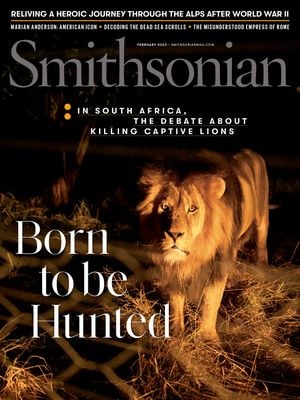Why Did the American Colonies Keep Their British Names After the Revolution?
You’ve got questions. We’ve got experts
:focal(456x334:457x335)/https://tf-cmsv2-smithsonianmag-media.s3.amazonaws.com/filer_public/83/4e/834e74b5-f58c-4580-a464-4b876cf00234/ask.jpg)
Q: Why are so many counties and cities in the original 13 colonies still named after British nobility? Dan Vesco | Haymarket, Virginia
It’s hard to say for sure why specific places weren’t renamed, but overall, the American Revolution brought limited change. From the outset, many colonists opposed it or were indifferent. After the war, the U.S. began rebuilding economic and diplomatic ties with Britain. In contrast, French revolutionaries a few years later beheaded the king, queen and thousands more, and abolished the feudal system. They adopted reforms for education, weights and measures, with new names for everything. Some reforms, like new weeks and months, ultimately failed, because people couldn’t get used to such radical transformations. Still, for people living in the 13 colonies—free or enslaved—the American Revolution changed life much less fundamentally. David K. Allison, curator emeritus, National Museum of American History
Q: Have scientists searched the great desert of Turkmenistan for dinosaurs? Marie Thomas | Spring Valley, California
The Karakum Desert, which covers 70 percent of Turkmenistan, would seem like a good place to search for fossils, given that neighboring countries like Uzbekistan and Tajikistan have yielded major finds. So far, no major discoveries of dinosaur bones have come from Turkmenistan—but in the 1980s, scientists from the Academy of Sciences of Turkmenistan discovered spectacular tracks made by meat-eating dinosaurs from the Late Jurassic (163 million to 145 million years ago) in Turkmenistan’s Kugitang Mountains. As is often the case with such finds, it is likely that local people knew about the tracks without understanding their significance. Various tourism guides now promote the site as an attraction. Hans-Dieter Sues, curator of vertebrate paleontology, National Museum of Natural History
Q: Which country in the world has the most endemic bird life? Patricia Soule | Palmyra, Virginia
Indonesia is high on the list, because it has some 17,500 islands with varied topography. Each of Indonesia’s islands hosts its own bird life. Many different species arrived on the different islands and just stayed and evolved there. That said, I just returned from a trip to Colombia; there are lots of endemic bird species there and elsewhere in South America. The Andes mountain range is high in diversity, since its many peaks are like islands in the sky. Gary Graves, research zoologist and curator of birds, National Museum of Natural History
Q: When astronauts travel to the Moon, how do they pass through the Van Allen radiation belts unharmed? Andy Ventriglia | Niagara Falls, New York
The short answer is “quickly.” The longer answer is: NASA compiled extensive data from satellites on the distribution and intensity of radiation in the Van Allen belts—regions starting about 400 miles above the Earth’s surface filled with highly charged particles from the Sun—and closely monitored for solar flares that could increase radiation. Calculations based on the protection afforded by spacecraft walls and spacesuits convinced engineers that the total dosage during rapid transit of the belts would be well within tolerable limits, and the probability of adverse health effects would be acceptably low. Allan Needell, curator emeritus of space history, National Air and Space Museum
